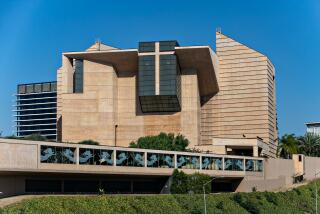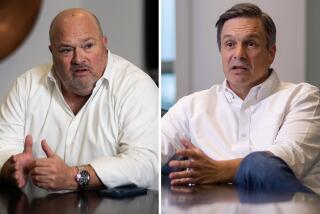Vatican defends pope over delay in defrocking California priest
- Share via
The Vatican insisted Saturday that Pope Benedict XVI had done nothing wrong when, earlier in his career, he hesitated to defrock a California priest who had admitted to molesting two boys.
A Vatican lawyer said that it was the local bishop, John Cummins of Oakland, who bore primary responsibility for protecting children from the abusive priest, Stephen Kiesle, and that the pope, then known as Cardinal Joseph Ratzinger, had acted appropriately when he declined to take immediate action.
“It’s the job of the bishop to discipline the priest,” said the lawyer, Jeffrey S. Lena of Berkeley, in an e-mail to The Times. “The pope is not a five star general ordering his troops around. That is simply an incorrect idea about the allocation of authority as between the pope and his fellow bishops.”
Cummins, now 82 and retired, had written to Ratzinger in the early 1980s, when the future pope was the Vatican’s top official in charge of doctrinal enforcement, asking that the Vatican agree to Kiesle’s request that he be “laicized,” or defrocked. Kiesle had already been relieved of his duties as a priest after pleading no contest to misdemeanor charges of lewd contact stemming from the molestation of two boys, ages 11 and 12.
Ratzinger had replied that although the matter was of “grave significance,” he needed more time and information before deciding whether to grant the request. It was granted two years later.
In the interim and for a period afterward, Kiesle was allowed to volunteer at a parish in the Bay Area town of Pinole, where he was later accused of having abused children.
Benedict has come under a chorus of criticism in recent weeks as documents have exposed what some perceive as his inadequate response to sexual abuse cases while archbishop of Munich, Germany, and later as head of the Congregation for the Doctrine of the Faith. In every case, the Vatican has suggested that responsibility fell on lower-ranking officials.
Cummins could not be reached for comment Saturday. He told the Associated Press previously that he “didn’t really care for” Kiesle and didn’t recall having written to Ratzinger about him.
In his e-mail, Lena, the lawyer, said it would have been normal for Ratzinger to weigh a request for defrocking carefully and deliberately.
It is, he said, “a rigorous canonical process of deep religious significance that in many instances takes time, particularly in the pre-electronic communication age. . . . It is not like simply taking off a collar, or firing a person from a job.”
Moreover, Lena said, defrocking is not the primary way the church disciplines priests. “It is an important mechanism for ridding the priesthood of malefactor priests,” he said. “But it is not the primary mechanism of protection of children.”
Rick Simons, who represented two victims who filed lawsuits against Kiesle, disputed the Vatican’s defense of the letter and the characterization that it was up to the local bishop to protect children from abusers like Kiesle.
“They never expressed any concern for the victims of this child molester, and instead said, ‘Gee, it’ll bring a scandal on the church,’ ” he said Saturday.
“Protecting children is everybody’s job. The bishops in this case are trying to protect the kids by getting this molester out of the cloak of authority, and the Vatican is standing in the way.”
mitchell.landsberg
@latimes.com
More to Read
Sign up for Essential California
The most important California stories and recommendations in your inbox every morning.
You may occasionally receive promotional content from the Los Angeles Times.











